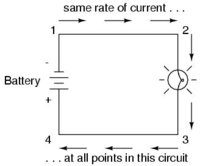burns
OWG
Pete P, I always apprecitate an opportunity to expand my understanding, which is rather elemental. So thank you for your comments.
But I think our differences here are sematic.
My simple understanding is that the voltage input to the primary windings of a coil in the points bikes (stock/no ballast resitor) is identical to the input to the primary windings of the coil in a PAMCO equipped bike.
The PAMCO allows for a coil with lower resistence primary windings than points can handle without arcing and that lower resistance coil puts out a hotter spark than the higher resistence coils used on the points bikes.
I phrase that simply as "the performance advantage is from the hotter coil"
So, unless of course you are saying that the PAMCO would result in a hotter spark from the same coil, our disagreement is a matter of word choice.
But I think our differences here are sematic.
My simple understanding is that the voltage input to the primary windings of a coil in the points bikes (stock/no ballast resitor) is identical to the input to the primary windings of the coil in a PAMCO equipped bike.
The PAMCO allows for a coil with lower resistence primary windings than points can handle without arcing and that lower resistance coil puts out a hotter spark than the higher resistence coils used on the points bikes.
I phrase that simply as "the performance advantage is from the hotter coil"
So, unless of course you are saying that the PAMCO would result in a hotter spark from the same coil, our disagreement is a matter of word choice.


 I'm tired, let's move on. Even in class I would have to say . . see me after class, we need to move on.
I'm tired, let's move on. Even in class I would have to say . . see me after class, we need to move on.